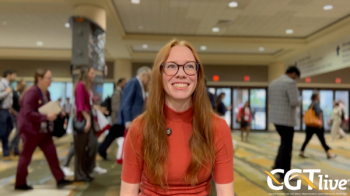
Batten Disease Gene Therapy Continues to Make Progress Despite Setbacks
Ineka Whiteman, PhD, head of research and medical affairs, BDSRA Australia, discussed what has occurred in the field of Batten disease gene therapy in the past year.
Neuronal ceroid lipofuscinosis (NCL) is a group of 13 rare inherited lysosomal disorders affecting the nervous system which are collectively referred to as Batten disease. According to the Batten Disease Support and Research Association (BDSRA), Batten disease is estimated to occur in approximately 2 to 4 in 100,000 births in the United States; although, the BDSRA indicates that the actual occurrence may be even higher.
Last year, CGTLive® reached out to several experts to get
CGTLive: Have there been any promising updates in Batten disease gene therapy since we spoke last year?
Ineka Whiteman, PhD: Over the past 12 months we have seen ups and downs in the therapeutic pipeline for Batten disease. On the positive side, Neurogene's ongoing NGN-101 phase 1/2 gene therapy study in CLN5 disease has now fully enrolled its cohorts 1 and 2, and has expanded to include a final higher dose cohort. We look forward to seeing the interim data from this study, which we expect will be available by the end of this year.
Following
Off the back of this news, Latus Bio's launch announcement in May was a welcome development, with 1 of its lead product candidates currently being in preclinical development for CLN2 disease. Their novel adeno-associated virus (AAV) capsid purportedly shows strong potency, specificity, and safety profiles, and our community will certainly be closely following the developments of this program.
Have there been any new disappointments or setbacks?
Of course like so many in the rare disease world, our Batten disease community is unfortunately no stranger to disappointing news on the therapeutic development front. Over the past 12 months, we saw discontinuation of multiple clinical gene therapy programs, including Lexeo Therapeutics' CLN2 disease program, and Amicus Therapeutics' clinical programs for both CLN3 disease and CLN6 disease. Along with its preclinical study for CLN8 disease, Amicus has now returned all rights and responsibilities for these programs to Nationwide Children's Hospital, Ohio, who are now evaluating next steps for each.
In November, REGENXBIO announced their decision to halt the development of their 2 CLN2 disease programs, RGX-181 (central nervous system-directed gene therapy) and RGX-381 (ocular gene therapy), a decision based on 'company economics, not clinical data'. With a number of patients already treated in studies outside the US, this announcement was an unexpected and devastating blow to our community. The upside however, with promising early data continuing to emerge, is that REGENXBIO continues to actively pursue partnership opportunities and remains engaged with the BDSRA Foundation and other patient groups globally to ensure the ongoing development of both programs. We are hopeful that some good news is on the horizon in that regard.
Beyond gene therapy programs, is there anything else you'd like to share about things happening in Batten disease research?
Outside gene therapy, we've seen positive developments in the Batten-1 (miglustat) phase 1/2 study for CLN3 disease. In April, program sponsor Beyond Batten Disease Foundation and Theranexus announced positive 18 month safety and efficacy data. Despite program delays due to unanticipated funding issues, advancement to the phase 3 pediatric trial continues to be the sponsors' highest priority and we remain hopeful that this will commence in the near future.
This transcript has been edited for clarity.
REFERENCE
1. What is Batten Disease? Batten Disease Support and Research Association. Website. Accessed June 8, 2023. https://bdsrafoundation.org/what-is-batten-disease/
Newsletter
Stay at the forefront of cutting-edge science with CGT—your direct line to expert insights, breakthrough data, and real-time coverage of the latest advancements in cell and gene therapy.
















































